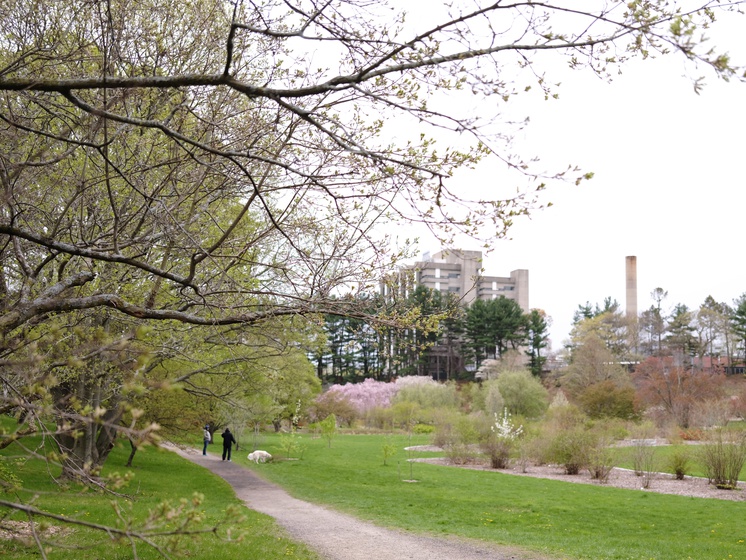Professor William N. Friedman wants to help students establish a relationship with “the other.”
He defines “the other” as “the biological world that’s not human” — beings that, although alive, might not reciprocate actions or emotions. Friedman helps students interact with “the other” in his freshman seminar, “Tree.” In the seminar, each student is assigned a tree in the Cambridge area; students visit their trees once a week.
How did an arboreal course come to be? After eight years of teaching a seminar on Charles Darwin, Friedman wanted to do something different. His new seminar is unusual among Harvard’s entire catalogue.
For Friedman, developing “Tree” was natural as, well, trees. He directs the Arnold Arboretum, Harvard’s museum of trees. Arnold Arboretum is a 281 acre plot that contains trees from all over the world — over 15,000 plant species in all. Friedman described the arbor as “the best campus at Harvard.” His class arose from a desire to show more students the Arnold Arboretum, and to demonstrate that trees are a plentiful resource at Harvard.
“So, to your question ‘Why ‘Tree’?’ Trees are what I have,” Friedman says.
Though Friedman is a professor of Organismic and Evolutionary Biology, he does not consider “Tree” a science course. Biology is central, but students also read poetry and study legal papers. “Generally, this is a very free-form environment where we can be as poetic or technical as we want, and it’s a great opportunity to see how other people see the natural world,” Sebastian L. Garcia ’24, a student in the class, says. “I also really love biology, philosophy, and being out in nature,” Garcia adds. “This was the perfect combination of all these things.”
Another student, Brayden H. Orpello-McCoy ’24, emphasizes that “the way class has been structured allows for just the right balance between knowledge sharing, student collaboration, and thoughtful and extensive discussion.” Each class, for instance, allows for 40 minutes of conversation regarding the photos of students’ trees.
The most important part of this course are the weekly visits to the Arnold Arboretum and other local sites. There, students partner with an individual tree for the semester — and potentially after. They visit it, spend time with it, and photograph it each week. They take note of the way their trees change, similar to how an old friend may change between seeing them. As Friedman says, “Hopefully, each time they go back not only is the tree changed a little bit, but they’ve changed a little bit also.”
“Personally, my tree has become a place where I am comfortable and something that I am excited to share with others,” Orpello-McCoy says. “I’d venture to say that this is felt by most students in the seminar.”
The physical location of the students and their respective trees does not matter to Friedman. “If you were in South Korea, I would have probably reached out to some colleagues at the Korean National Arboretum, [and] we would have found a nice tree for you,” Friedman says. “It [doesn’t] matter where the students were in the world.”
“Tree” also touches on topics larger than individual relationships. Though the class does not often address climate change directly, Friedman’s emphasis on biodiversity and forming relationships with nature inherently touches on the issue. He explains that forming relationships with individual organisms makes people feel the effects of climate change more keenly.
“The individual relationships are my way of saying: This isn’t conceptual — it’s real,” he says. “Things are dying.”


